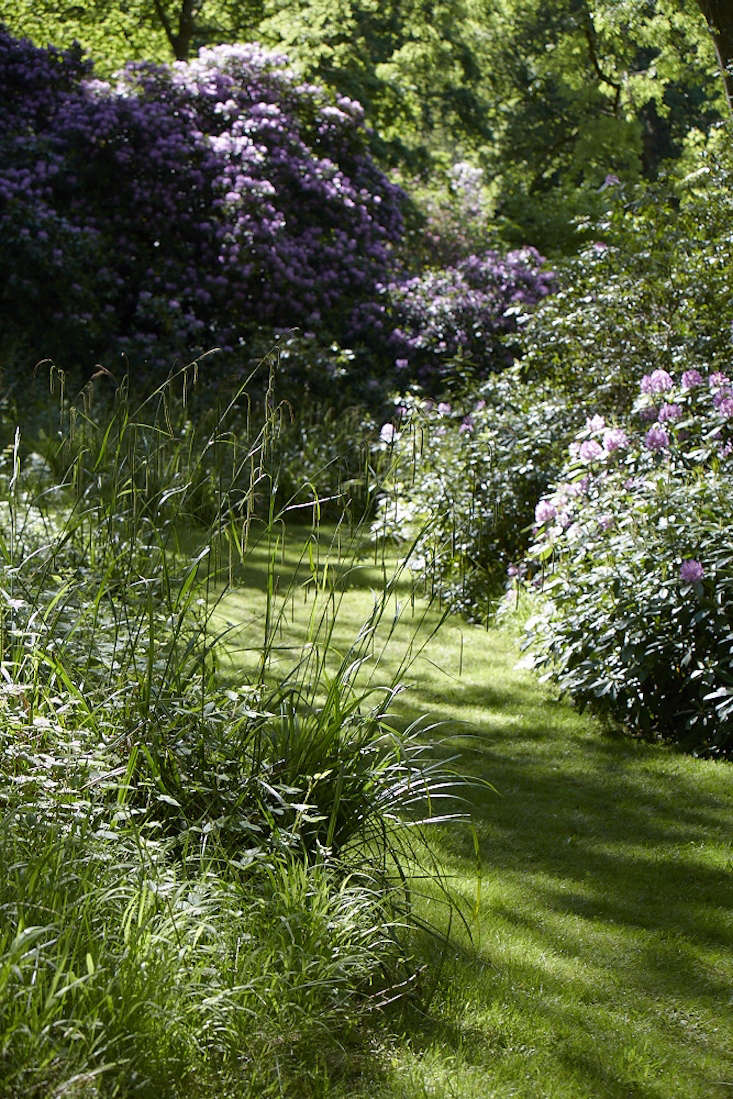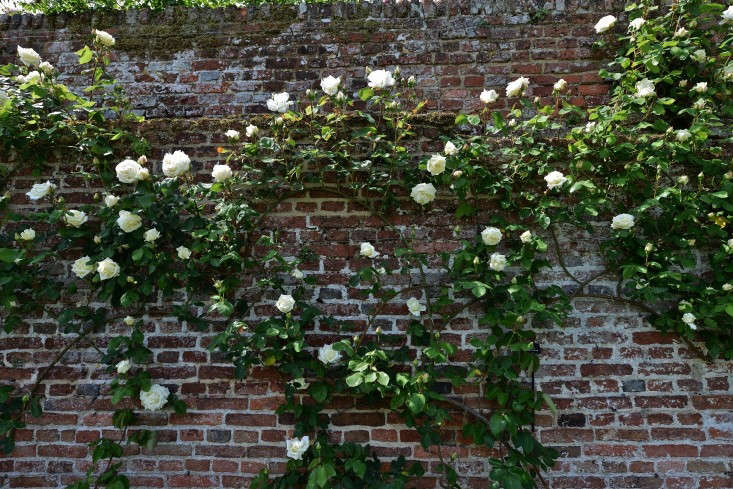Few of us are immune to the allure of the country estate—the sweeping views and bucolic vistas across miles of countryside, the sense of space and fresh air and, of course, the joy of no near neighbors. It’s a pipe dream for most but we can still learn from the landscaping tricks that have been honed on estates for centuries. Here are 10 ideas to steal for everyday gardens.
Choose Your Color

English estates invariably have an estate color that is applied to all woodwork, from signage and gates to outbuildings. It’s a trick that can be applied to smaller spaces too, pulling together exterior hardscaping. At Walnuts Farm in East Sussex, Nick and Bella Ivins used the same trick on their smallholding, painting everything from window frames and dovecote to an outdoor bread oven in the same mid-gray paint.
Plant an Avenue

Every estate boasts at least one grand avenue of trees, either up a sweeping driveway or to delineate areas within the gardens. An avenue instantly creates vertical structure but also a sense of place and atmosphere, leading visitors through to different areas of the garden. In smaller spaces, an avenue of classic estate trees such as hornbeam, beech, or lime can be clipped to maintain a more modest size. Alternatively, use an ornamental fruit tree such as Pyrus Calleryana ‘Chanticleer’, which will give beautiful blossom in spring, lush foliage in summer, and autumn color too.
Mow a Path

What could be simpler than a mown path cutting through tall grass in summer? It’s an effective way to blend walkways with the wider landscape, but will also emphasize the effect of meadow grasses and wildflowers during the summer months. In larger spaces, create paths of different widths for even more contrast.
Build Old Walls

The walled garden might be the most coveted English garden feature. Many of these practical, hardworking spaces cover a few acres of grand estates, creating a micro-climate that’s perfect for growing fruit and vegetables for the house. But the mellow old brick walls are just as useful for growing edibles or for sweeping flowering climbers. A brick wall in reclaimed bricks might seem like an extravagance, but as a backdrop, it’s unequaled and lends instant character.
On Repeat

Repeated plantings create a sense of rhythm and creating a grid of tall topiaries is an effective way to get a country house look. At Duntisbourne House in the Cotswolds, Tom Stuart Smith planted a vast parterre using hornbeam topiaries, a planting that looks equally good year-round, especially in winter.
Borrow the Landscape

When considering views, landscapers think about maximizing the borrowed landscape, the area beyond your property that can create a sense of space and drama. At Wortley House in Gloucestershire (as shown above), owners Simon and Jessica Dickinson draw in the land beyond their boundary by creating vistas towards it, using dramatic avenues and stately gates and statuary.
Make an Entrance

At Sissinghurst Castle in Kent, Vita Sackville-West famously divided her garden into numerous rooms and then punctuated each entrance with an attention-grabbing gate. It’s a trick that can work on any scale; build entrances around interesting antique metal or wooden gates that will increase the sense of anticipation as you enter each new zone of your garden.
The Big Reveal

When making an entirely new garden from a blank space, one of the biggest challenges is creating height, but it’s essential in any space. Tall hedges and shrubs not only help to create interest around paths but also contribute to the big reveal, concealing views until you chance upon them. It’s these stop-you-in-your tracks moments that are used consistently in some of the world’s most famous gardens. The 18th-century landscape architects William Kent and Capability Brown both played with the idea of concealing features only to then provide a tantalizing glimpse as you journey around a garden or landscape.
Mark Boundaries

You won’t see obvious boundaries on vast estates, but sometimes demarcation of certain areas is required. For UK landscape designer Arne Maynard, easy-on-the-eye metal estate fencing is the go-to boundary treatment. It has an ancient charm but will also disappear into the landscape. Unlike wooden fencing, it will last for centuries.
Wrap the House

When visitors to Sissinghurst admired the endless brick walls that were trained with languorous roses, hydrangeas, and clematis, Vita Sackville-West pointed out that all houses have exterior walls that can be covered with abundant climbers. Well-trained climbers add another layer of texture to a house, as well as lush foliage and seasonal color. And if you can train scented climbers up high, then they will fragrance your bedrooms too.
Designing a new garden? Start with our curated guides to Garden Design 101. And see more garden ideas to steal:
- 10 Garden Ideas to Steal from Scandinavia
- 11 Ideas to Steal for a Moonlight Garden
- 10 Garden Ideas to Steal from France








Have a Question or Comment About This Post?
Join the conversation